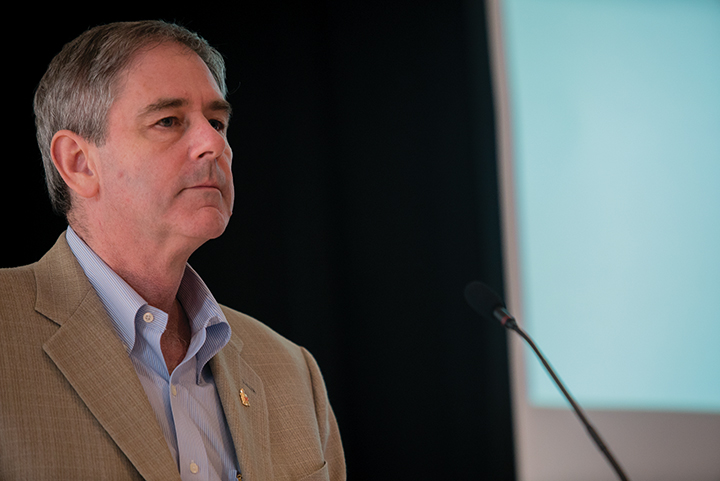The University Senate approved four new academic programs in the finance, environmental health and computer networking fields during its meeting Wednesday.
The new programs — a master’s and doctoral program in environmental health sciences as well as a master’s program in quantitative finance and a graduate certificate program in computer networking — still require approval from university President Wallace Loh, the University System of Maryland Board of Regents and the Maryland Higher Education Commission. The Senate Executive Committee voted in approval of the programs on Oct. 19.
The doctorate in environmental health passed 91-4 with two abstentions. The related master’s program passed 91-3. None of the four proposals faced discussion on the senate floor.
The new 24-credit environmental health doctoral program would be the eighth doctoral program within the public health school. The 31-credit master’s program was designed. Andrew Harris, programs, curricula and courses committee chairman, presented all four proposals and described the rationale for each.
“Toxicology is a subset of environmental health,” Harris said. “The lack of a broader Ph.D. program has made it difficult to attract students who are reluctant to be perceived as toxicologists.”
The public health school and the Maryland Institute for Applied Environmental Health would host both graduate-level programs. The school anticipates about 15 students to be in the new doctorate program, some of whom would be transitioning out of the current toxicology specialization, according to an October Diamondback article.
The quantitative finance master’s program would provide a more specific concentration than the current master’s program in finance in the business school. The new 36-credit program would focus on applying mathematical and statistical models to financial markets, Harris said. It passed 86-7 with three abstentions.
The business school had 129 students register in the finance master’s program for the 2015-16 school year — below the typical enrollment goal of about 180 newly admitted students per year, according to the senate’s proposal for the program.
The proposal stated that some admitted students who did not accept their places in the business school chose schools with more specific master’s programs, similar to the new proposed program. The business school anticipates that about 60 students of each new class of 180 or so would go into the quantitative finance program, according to the proposal.
The graduate certificate in computer networking would be available to graduate engineering students enrolled in the engineering school. The senate passed the proposal with a vote of 90-4, with five abstentions.
The 12-credit program would give interested students additional certification in the field — something that nearly half of current telecommunications students described as “very valuable,” according to a survey conducted by the engineering school.
Pending approvals from Loh, the Board of Regents and the Maryland Higher Education Commission, the programs have a target start date of the fall 2017 semester, according to the proposals.
The final senate meeting of the academic semester is set for Dec. 6 and will feature Loh giving his State of the Campus address.



